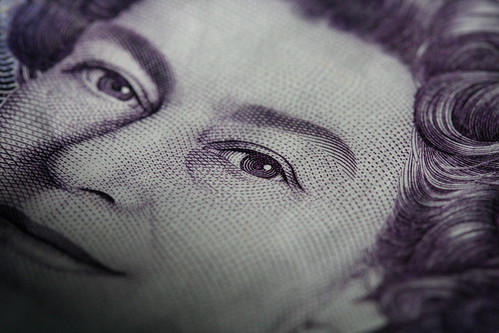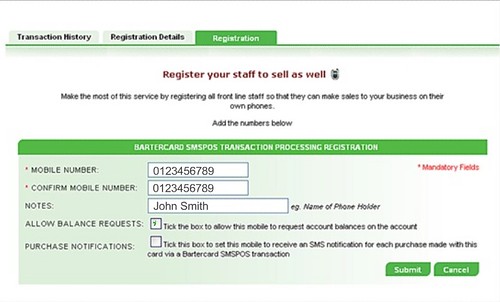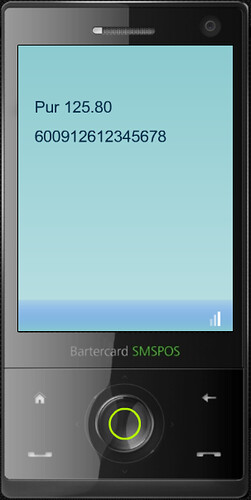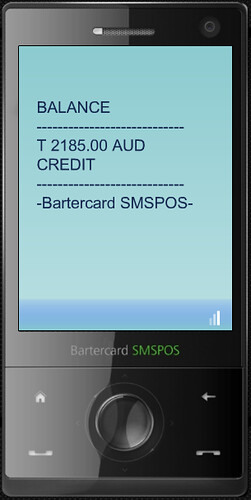
As the financial crisis starts to unfold, there is an increasing intuitive understanding among curious people that the way our money system works is at the heart of our problems. As a result, there is a renewed interest in the blogosphere in discussing alternative forms of currencies, either local or global. One particular post that caught my attention is from the TheOilDrum.com (found via Mendo Moola blog), whose most interesting part is actually the long discussion thread on the various options for alternative currencies and their respective merit.
There were a lot of good comments and I’ve tried to organize them a little bit.
My high-level conclusions/understanding after reading this discussion are:
- We should have two separate currencies, one for speculation and investments and one for medium of exchange.
- A fiat money for the medium-of-exchange money is not a bad idea. Backing it with anything, even clean Kwh or a basket of commodities will make it the best asset to own, which won’t contribute to its circulation
- The one used as medium of exchange should depreciate by design
- its issuance may be based on a decentralized measure of creditworthiness rather than on a relatively centralized banks-based creditworthiness
- [This subject was not really discussed] A Full Reserve Banking system for the investment one might be a good idea, although a Fractional Reserve Banking system is somewhat more fault-tolerant and may encourage more risk-taking (when faults are limited, it is impractical as we know when faults all happen at the same time)
Here are my complete reading notes.
What is money and why we need it
team10tim says:
The fungibility of money is the sole reason that we, as a civilization, prefer it over barter. It reduces complicated situations down to a single common denominator. […] Money isn’t good or evil, it’s soulless.
ets says:
If you think of money as an extension of the barter system, then money actually represents the incomplete portion of a trade.
Later:
There are several perspectives on what the essence of money really is, but one is that a unit of money is a claim on a certain percentage of the total goods and services available in the market (a share, if you will). Another common perception is that “time is money”, or rather, vice versa. While the relation is not really that simple, there certainly is a time element to money.
Later:
The fundamental problem with money: Namely, that money is too good of an asset compared to nearly any other commodity.
On the benefits of separation and co-habitation of “medium-of-exchange” currencies and “store-of-value”/investment currencies
One recurring point in the comments was the fact that a currency being both a medium of exchange and a store of value is problematic. Both should exist separately and conversion facilities should exist.
Steve from Virginia says:
In the West, the ‘single function’ currency allows non-productive speculative claims to be made against productive parts of economies. This is a serious flaw in the single function regime. […] The dual currency idea is one I’ve had for a long time; one ‘hard money’ convertible ‘Gold Dollars’ that would be useful for saving and productive investment and a second ‘fiat money’ non- convertible (electronic) currency that would be used for financial speculation.
Doom and Gloom Dad:
I don’t think you want to back up a local “medium of exchange” currency directly with a “store of value” currency
ets says:
Currency should be a transport for value. Using currency to store value would be like using a cargo ship as a warehouse. My opinion is that currency should not act as a store of value, there are innumerable commodities that can serve that purpose. Currency, on the other hand, should be designed to do one thing particularly well: circulate. In my mind, I think a paradigm shift regarding money is necessary. It should not be seen as an asset, but rather a shared resource. By holding onto it you are depriving others of its use.
etc says:
It seems to me that it is often overlooked that the two most commonly cited attributes of money are mutually incompatible. Those attributes being: a medium of exchange, and a store of value. That is, when something is being exchanged it is not stored, and when stored cannot be exchanged. So the more money that is stored, the less is available for exchange (a.k.a. commerce). This is, to me at least, a very important point, and is one reason I prefer demurrage based systems.
On the benefits of money whose value depreciates
This discussion only applies to medium-of-exchange moneys, obviously. The basic idea is that if it does not depreciate, then it is kept and hoarded by those citizens that are most productive, until they own all the money, which they can lend and essentially control commerce.
Jokuhl says:
if your money is quickly depreciating, you would use it to get not only essentials, but in a more long-term frame of mind, to use these earnings to invest in Real long-term assets. Durable Products, things that would retain their value. This should have the effect of minimizing the resource usage we see today, where we buy the cheapest stuff, and as it dies quickly, are constantly replacing our belongings, using up resources at this deadly pace.
ets says
As to inflation being equivalent to demurrage; that is only generally correct. I don’t think inflation itself is the problem, but rather the unpredictability of the inflation rate. Also, the inflation effect varies for different segments of an economy, distorting price signals, and making the “inflation tax” not very equitable.
Also, later ets says:
My opinion is that currency should not act as a store of value, there are innumerable commodities that can serve that purpose. Currency, on the other hand, should be designed to do one thing particularly well: circulate.
On interest
etc says:
The idea that money would not be lent without positive interest is based on the perception that money is a reasonably good store of value. If money were to devalue on a relatively short time scale, one might find that the borrower would be considered as providing as much of a service as the lender.
Issues with local currencies and solutions
Doom and Gloom Dad explains that one of the major issues with local currencies is that it is an economic service that is provided for free, and as a result depends on donated time, money and resources and inevitably results in the burn out of the organizers.
Issues related to the backing of money
ets says:
Commodity-based currencies artificially inflate the value of the backing commodities. Additionally, dealing with commodity variety and grades is problematic. An energy unit would surely be my choice for any “single” physical backing. However, I think it would better to back a currency with a basket of all the goods and services produced by mankind in proportion to their marketable quantities. In other words, an arbitrary unit such as “dollar” should suffice.  [In other words] I do not advocate commodity backed currencies, with a basket, or otherwise. My comment was intended as tongue-in-cheek, the basket being comprised of “all goods and services”, clearly an intractable problem.
[In other words] I do not advocate commodity backed currencies, with a basket, or otherwise. My comment was intended as tongue-in-cheek, the basket being comprised of “all goods and services”, clearly an intractable problem.
Gold bugs: gold does not have any significant “intrinsic value”. Its value was declared, essentially by fiat, a long time ago… Its value is determined the same way the value of anything is determined; by what someone will give you for it in trade.
Doom and Gloom Dad says:
The backing commodities tend to be produced for their monetary status rather than their more normal utilities. One cannot really get away from that with a basket of commodities. It may take a bit of analysis to see that. Even a very extensive basket of commodities puts an emphasis on commodities over services.
Issues related to the creation of money
team10tim says:
Whoever controls the money supply will have substantial control over the economy. Whoever receives the newly minted money is going to enjoy primacy. The question is how do we allocate that primacy? How do we enjoy the fungibility of money and retain control over values in the ethical sense?
According to Doom and Gloom Dad, there is no issue of money creation but an issue of creditworthiness of each participant:
Barter credits come into existence when a transaction is performed: One person’s account is augmented by the exact amount by which anothers is diminished. The sum over all accounts is at all times zero. It’s sort of like electrons popping up and leaving oppositely charged holes in a semiconductor.
Thus in a sense, there is no money supply. “How do we create money responsibly?” I believe that this is a responsible way of creating money.
ets replied with a very good point:
how much money is in a LETS system? It is not zero. The net system balance is zero. Simply because positive balances must equal negative balances by design. The money supply is actually the maximum amount of negative balance permitted in the system. If there were no limit to negative balances, the money supply would be infinite.






